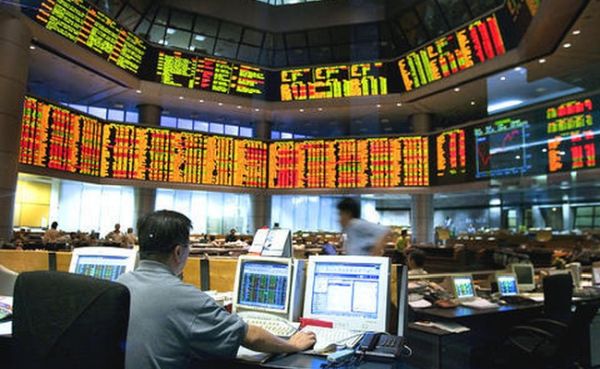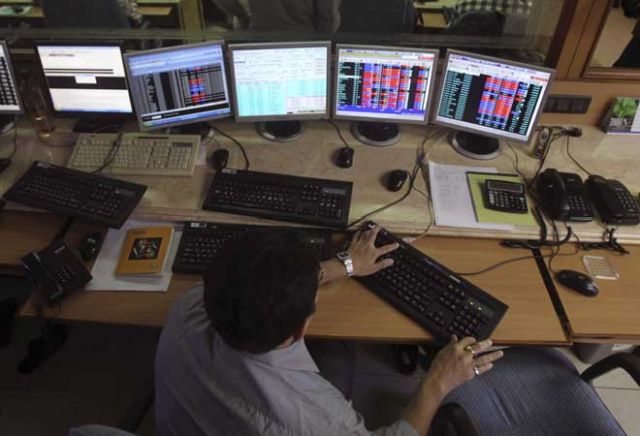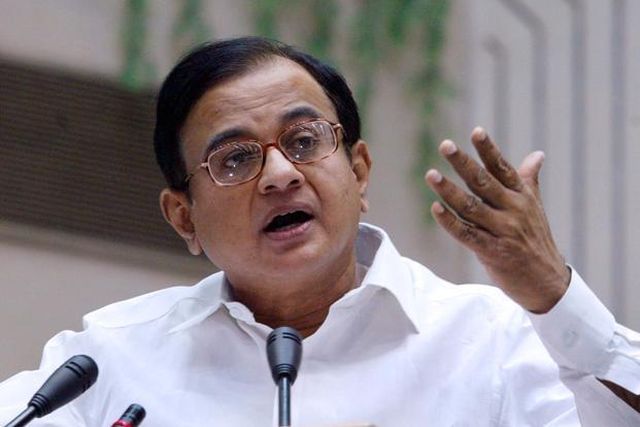
by Editor | May 25, 2021 | Muslim World
 Ankara : Turkey topped the member countries of the Organization for Economic Cooperation and Development (OECD) and ranked second in Europe with its gross domestic product (GDP) growth rate in the second quarter of 2018.
Ankara : Turkey topped the member countries of the Organization for Economic Cooperation and Development (OECD) and ranked second in Europe with its gross domestic product (GDP) growth rate in the second quarter of 2018.
The Turkish economy grew by 5.2 percent to 884 billion Turkish liras ($204.3 billion) in April-June period compared to the same period last year, Turkey’s Statistical Institute said on Monday.
With these figures, Turkey ranked first among the OECD countries, who released their data. Turkey was followed by Poland and Chile (5 percent), Hungary (4.6) and Latvia (4.4), according to data compiled by an Anadolu Agency correspondent.
OECD countries’ average growth rate was 2.5 percent in the second quarter, versus the same quarter of 2017.
On the other hand, the lowest growth rates were seen in Denmark, Japan and Italy by 0.6 percent, 1 percent, and 1.2 percent, respectively.
In the first quarter of 2018, Ireland was first among the 36 OECD countries with a growth rate of 10 percent, while Turkey ranked the second with 7.3 percent.
Among 28 countries of the EU, Turkey ranked the second after Malta, whose GDP rose by 5.7 percent year-on-year in the second quarter. Poland, Hungary, and Latvia followed Malta and Turkey. In the same period, EU28’s slowest-growing countries were Denmark (0.6 percent), Italy (1.2) and the UK (1.3).
Both EA19 and EU28’s economies grew by 2.1 percent in the April-June period, versus the same period last year.
Meanwhile, the North American Free Trade Agreement (NAFTA) countries’ average growth rate for the second quarter was 2.7 percent.
Turkey’s annual GDP growth rate was also 7.4 percent in 2017.
—AB/UNA-OIC

by Editor | May 25, 2021 | Banking, Economy, Markets, News
 By Rohit Vaid,
By Rohit Vaid,
Mumbai : Escalating geo-political tensions following further trade protectionist measures, coupled with high crude oil prices and the rupee’s movement against the US dollar will determine the trajectory of the Indian equity markets in the coming week, analysts said.
According to market observers, other factors such as the direction of foreign fund flows along with healthy GDP growth numbers and the upcoming macro-data points are also expected to influence investors’ sentiments.
“The higher GDP growth rate numbers is likely to buoy the sentiments in the markets, though the infrastructure output slowed down and fiscal deficit rose,” Devendra Nevgi, Delta Global Partners Founder and Principal Partner, told IANS.
“The PMI (Purchasing Managers’ Index) and the auto numbers will be closely watched, after the higher GDP growth rate.”
Apart from last week’s GDP growth numbers, trends in global markets and the rupee’s movement against the US dollar will dictate trend of key indices.
“Macro-economic data, trend in global markets, the movement of rupee against the US dollar and crude oil price movement will dictate trend on the bourses in the near term,” SMC Investments and Advisors’ Chairman and Managing Director D.K. Aggarwal told IANS.
In recent days, geo-political developments have pulled the Indian rupee to fresh intra-day and closing lows.
On Friday, the Indian rupee plunged to over 71 — the lowest-ever mark — against the greenback, surpassing the previous record low of 70.85 to a US dollar.
The Indian currency closed last Friday’s trade at a new record low of 70.99-71 per dollar, 25 paise weaker than its previous close of 70.74 per greenback.
Rushabh Maru — Research Analyst at Anand Rathi Shares and Stock Brokers — told IANS: “Strong reading of India GDP data may provide some relief to rupee. However, any appreciation in the rupee would be temporary as importers may rush to cover their unhedged exposure on any appreciation opportunity.
“Exporters are likely to refrain from selling US dollars at this juncture as there are talks of rupee moving towards 72-73 levels.”
Besides the rupee, the direction of foreign fund flows will also set the course for the key indices.
In terms of investments, provisional figures from the stock exchanges showed that foreign institutional investors sold scrips worth Rs 2,028.47 crore during August 13-16.
“Domestic market may see some more consolidation in the near term given sharp rally in last two weeks,” said Vinod Nair, Head of Research at Geojit Financial Services.
“However, we expect the downside is limited given improvement domestic macros and revival in corporate earnings.”
Last week, firm global cues lifted the Indian equity market for the sixth consecutive week as both S&P BSE Sensex and NSE Nifty50 rose by over one per cent.
Accordingly, the S&P BSE Sensex closed at 38,645.07 points, higher 393.27 points or 1.03 per cent from its previous close.
Similarly, the wider Nifty50 on the National Stock Exchange ended last Friday’s trade session at 11,680.50 points, higher 123.40 points or 1.07 per cent from the previous week’s close.
(Rohit Vaid can be contacted at rohit.v@ians.in)
—IANS

by Editor | May 25, 2021 | Markets, News
 New Delhi : An upswing in manufacturing activity accelerated India’s GDP growth rate in the first quarter of 2018-19 to 8.2 per cent, official data showed here on Friday.
New Delhi : An upswing in manufacturing activity accelerated India’s GDP growth rate in the first quarter of 2018-19 to 8.2 per cent, official data showed here on Friday.
According to the Central Statistics Office (CSO), the GDP at 2011-12 prices in the first quarter (Q1) of 2018-19 registered a growth rate of 8.2 per cent, up from 7.7 per cent reported for Q4 of 2017-18 and 5.6 per cent in the corresponding period of the previous fiscal.
“The economic activities which registered growth of over 7 per cent in Q1 of 2018-19 over Q1 of 2017-18 are ‘manufacturing’, ‘electricity, gas, water supply and other utility services’, ‘construction’ and ‘public administration, defence and other services’,” a statement by Ministry of Statistics and Programme Implementation said.
“The growth in the ‘agriculture, forestry and fishing’, ‘mining and quarrying’, ‘trade, hotels, transport, communication and services related to broadcasting’ and financial, real estate and professional services is estimated to be 5.3 per cent, 0.1 per cent, 6.7 per cent, and 6.5 per cent respectively during this period.”
Besides, the growth rate of gross value added (GVA) in Q1 of 2018-19 stood at 8 per cent from a rise 5.6 per cent during the corresponding period of the previous fiscal.
GVA includes taxes but excludes subsidies.
Sector-wise, quarterly GVA at basic prices for Q1 2018-19 from “agriculture, forestry and fishing” sector grew by 5.3 percent as compared to growth of 3 per cent in Q1 2017-18.
As per the data, quarterly GVA at basic prices for Q1 2018-19 from “manufacturing” sector grew by 13.5 per cent as compared to (-) 1.8 per cent in Q1 2017-18.
“IIP manufacturing registered growth rate of 5.2 per cent during Q1 of 2018-19 as compared to 1.6 per cent during Q1 of 2017-18,” the statement said.
—IANS

by Editor | May 25, 2021 | News, Politics
 New Delhi : Former Union Minister and senior Congress leader P. Chidambaram on Saturday challenged Prime Minister Narendra Modi’s government to match up with the UPA’s GDP rate in its fifth year and said that back series calculation of GDP has proved that the best years of economic growth were the UPA years 2004-2014.
New Delhi : Former Union Minister and senior Congress leader P. Chidambaram on Saturday challenged Prime Minister Narendra Modi’s government to match up with the UPA’s GDP rate in its fifth year and said that back series calculation of GDP has proved that the best years of economic growth were the UPA years 2004-2014.
Quoting figures of the recently released Ministry of Statistics’ data, Chidambaram said: “Truth has triumphed. The back series calculation of GDP has proved that the best years of economic growth were the UPA years 2004-2014.”
“The average growth rate under four governments since 1999 were– NDA I – 5.68 per cent, UPA I – 8.36 per cent UPA II – 7.68 per cent and NDA II – 7.35 per cent (four years),” Chidambaram tweeted.
“I wish the Modi government well in its fifth year. It can never catch up with UPA I, but I wish it catches up with UPA II,” he added.
Chidambaram said that the UPA governments delivered the best ever decadal growth and lifted 140 million people out of poverty and thanked the people for the opportunity to serve them for 10 years.
—IANS

by Editor | May 25, 2021 | Opinions
 By Vinod Behl,
By Vinod Behl,
Landmark reforms like RERA and GST, as also demonetisation, have brought about much-needed transparency in transactions, helping the real estate sector to free itself of fraud, malpractices and other problems faced by consumers and investors. Yet, the sector needs more reforms to break free of the various ills that still plague it in order to realise its full potential as a major contributor to the country’s GDP.
The reform-oriented Narendra Modi government, which is fine-tuning and reinforcing the reforms undertaken by it to increase their on-ground efficacy, has its task cut out to free real estate from high transaction costs, especially to achieve the success of its flagship mission of “Housing for All”.
Though the interest subsidy scheme (CLSS) under the Pradhan Mantri Awas Yojana (PMAY) has proved to be a big boost for first-time home buyers in the EWS, LIG and MIG category, yet high transaction costs are a deterrent to home ownership. Currently, GST, stamp duty and registration costs act as a dampener. There is an average stamp duty of six percent and it is not uniform and is much higher in some states. Further, in many cities, there is the anomaly of collector rates of property being higher than the market rates.
As such, home buyers end up paying more stamp duty and registration fee. Home buyers need to be given freedom from high transaction costs to boost sales and revive residential real estate, facing a slowdown for long. And this can be achieved by either rationalising stamp duty or simply subsuming stamp duty in GST. Similarly, while GST has imporved ease of doing business by doing away with multiple taxation, there is still a need to lower its 12 per cent rate, which is almost double the VAT and Service tax prevalent in pre-GST era, especially when Input Tax Credit provided by the government is not having the desired effect. Further, the high GST on cement should be brought down as in the case of paints, to bring down the cost of homes.
Home buyers also need freedom from the double burden of rent and EMI, particularly as hundreds of thousands of housing projects across the country are facing long delays. Earlier, the home buyers would get possession of their homes in 3-4 years but now, in many cases, it has almost doubled, causing great hardships to home buyers in terms of dual burden of rent and EMI. Some developers are helping home buyers tide over this problem by offering schemes to pay EMI only after possession. But ready homes is a sound solution to this problem as they do not have any development risk and, moreover, home buyers save on 12 per cent GST.
That’s why ready-to-occupy homes are being lapped up by home buyers. Here, the concept of “Build and Sell” can provide a long-term solution. Under RERA, a developer can’t start his project without land and all mandatory permissions in place. Also, there is not only a ban on funding projects through customer advances by way of pre-launching of projects but there is also a strict check on (mis)utilising funds collected from customers through the implementation of the escrow account mechanism.
As such, it makes sense for developers to adopt the “Build and Sell” model which is common in advanced countries. Leading developer DLF has already announced it would adopt this model. And, if the government organises cheap bank funding for at least developers of affordable housing, many of them will take to “Build and Sell”, to the advantage of property consumers.
Red-tapism is also proving to be a big bane of the real estate sector as the unduly long time taken by authorities in giving construction permits and other multiple sanctions adds the developers’ debt, in turn increasing home costs. And, since the sanctioning authorities do not come under the purview of RERA, there is no check on project delays due to the unduly long time taken in according project sanctions and giving completion certificates.
The ideal solution to this problem is a single window mechanism for project sanctions/clearances. Since this is not happening, the government should fast-track the process of online permissions/sanctions and make this time-bound.
Last but not the least, there should be freedom from defective and fraudulent land/property titles to make property transactions easier and safer. Thus, there is an urgent need to set up a Land Titling Authority in states to prepare and maintain a digitised registry of all immovable properties. This, together with introduction of Title Insurance for providing protection against any financial loss due to title deficiencies, will considerably help in enforcing contracts and prevent property deals from falling through, thereby effectively checking high litigation due to property ownership disputes.
The transparency brought in by this will further boost the confidence of foreign investors, thereby helping in putting foreign investment in Indian real estate on the fast track.
(Vinod Behl is editor, Realty Plus, a leading real estate monthly. The views expressed are personal. He can be reached at vbehl2008@gmail.com)
—IANS

 Ankara : Turkey topped the member countries of the Organization for Economic Cooperation and Development (OECD) and ranked second in Europe with its gross domestic product (GDP) growth rate in the second quarter of 2018.
Ankara : Turkey topped the member countries of the Organization for Economic Cooperation and Development (OECD) and ranked second in Europe with its gross domestic product (GDP) growth rate in the second quarter of 2018.




